50 Beautiful Deer-Resistant Plants The Prettiest Annuals, Perennials, Bulbs, and Shrubs that Deer Don’t Eat
Written by Ruth Rogers Clausen
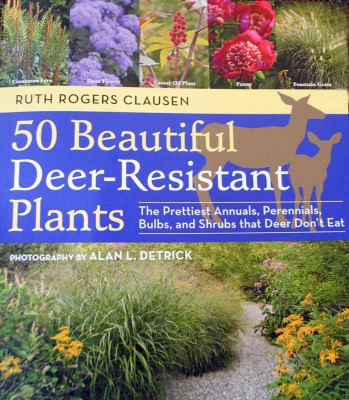 Deer are one of the challenges (understatement!) I face most often when designing gardens for my clients in Northern California.
Deer are one of the challenges (understatement!) I face most often when designing gardens for my clients in Northern California.
Most of my clients live in the hills with border Santa Cruz Mountains (Los Altos, Portola Valley, Woodside, and Palo Alto) and deer are an all-to-familiar visitor in their gardens.
The first chapter is one of my favorite chapters in this book.
Aimed at helping the reader to not only understand deer but also their behavior.
The premise is that if you understand their habits, you can better arm yourself against them. For example, deer need a safe place to hide, sleep, rest and eat in order for them to feel comfortable.
The takeaway tip?
Don’t make them feel comfortable! Remove standing groves of anything that they can hang out in and they’ll be forced to move on down the road to the next pit stop.![]()
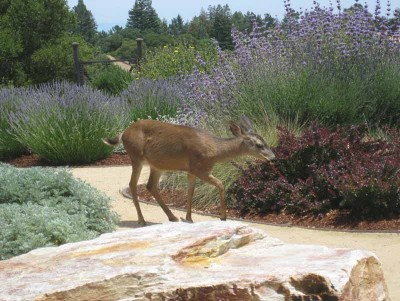 This chapter is also full of helpful general information, such as the different ‘deer away’ solutions (both commercially available and home-made) as well as gardening tricks that are effective in discouraging deer.
This chapter is also full of helpful general information, such as the different ‘deer away’ solutions (both commercially available and home-made) as well as gardening tricks that are effective in discouraging deer.
For example, consider changing the terrain of your property by adding different levels, steps and slopes. Deer dislike the unsure footing, especially when running.
Another tidbit is not to over-fertilize, which encourages lots of yummy tender new growth.
Or, one of my favorite personal planting tricks, which is to surround a ‘deer candy’ plant by those that deer dislike.
When a client of mine just has to have roses, for example, I might surround the roses with berberis, salvia, or euphorbia.![]()
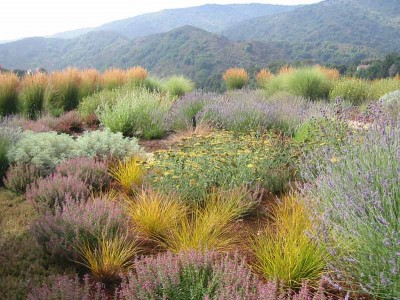 And finally, time for the heart of the book – the 50 recommended deer-resistant plants!
And finally, time for the heart of the book – the 50 recommended deer-resistant plants!
I thought I might find one more list of an author’s favorites, which is all fine and good albeit a bit predictable.
I was so pleased to see a carefully thought through description of each plant – not too long, not too short.
Each suggested plant follows the same format: first a thorough description, followed by detailed instructions on how best to grow it, and ending with an entire paragraph titled ‘Design Tips’ filled with creative ways to use the plant in the garden.![]()
As a designer, you bet this is my favorite part!
Under ‘Design Tips’ the author lists several different varieties of the plant as well as creative plant combinations to try.
The plants are broken down into the following categories: Annuals, Perennials, Shrubs, Ferns, Bulbs, Herbs and Grasses.
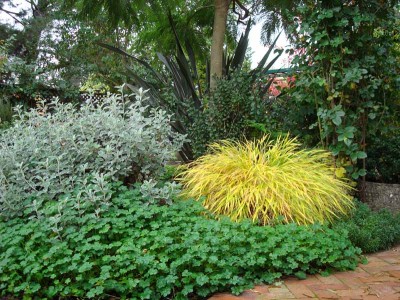
I wondered if I would see many of my favorites included in her list, as she undoubtedly had to include plants outside of my USDA zone.
I fully expected to see the majority of plants be those that we cannot grow (ie: water thirsty).
I was thrilled to see many of my favorite stand-bys, such as licorice plant, euphorbia, thyme, Lenten rose, lavender, ostrich fern, and many of the grasses.
And I was even more thrilled to see a few plants that might thrive in my zone that I haven’t tried before, and that seem to thrive in my area as well.![]()
![]()
Overall, I’d highly recommend this book to all deer-plagued gardeners, from those who are just beginning to those who are advanced.
Anyone tired of the never-ending battle with the deer needs to have this book by their side!
Oh, and one last thing. If you’d like to read a little more about some super successful deer-resistant plants that do really well on the West coast, head on over to my friend Gen’s blog at North Coast Gardening.
* I’d like to mention that receiving a copy of this book was my sole compensation for reviewing the product. I wouldn’t recommend it to you if I didn’t think you’d love it. Honest!
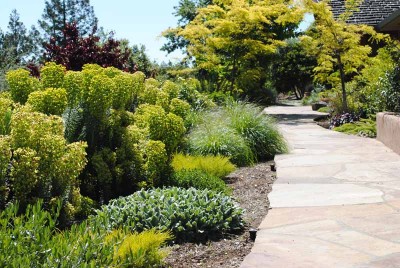
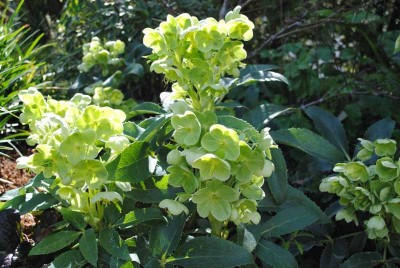






9 Comments
Well, this certainly seems worthy of a read. Thus far, if it wasn’t for the rosemary, lavender and thyme outside our deer fence, we’d have nothing in bloom on the approach to the house! Ferns are fabulous, if you have the right conditions for them. They just seem to leave them alone. I’ve noticed, here at least, that some Salvias they never, ever touch, but others seem to be fodder for the deer, at least in their first season of growth. As the plants mature, and the stems become more woody, they eventually leave them alone. As for steps, we have some going up our slope to the poultry houses, and deer run up and down them all day! 😉 Will definitely watch out for this book though, I’m always looking for new ways to curtail our resident cervids!
Hi Curbstone! One of my favorite deer-resistant combos is phlomis fruiticosa (Jerusalem Sage), leonotis leonura (Lion’s Tail) and Lavender. I think they’d do really well in your area and you’d have blooms for 8 months out of the year, along with your rosemary and thyme. I agree, some salvias are too tender when young and the deer will devour them (like ‘Sierra San Antonio’ – it’s a goner), but so many are left alone. I think you’re right – when they’re a little woodier they’re less appealing. A little disheartening to read about your step-skipping deer, though. Hmmm…I’d better think of something else!
Hey Rebecca, thanks for reviewing Ruth’s book! It is one of my faves, too. BTW, there are actually lots more than 50 deer resistant plants, as each of the companion plants she lists are also deer resistant. I think we figured it’s actually around 200 or so.
I will give Ruth your suggestion about her second book. 🙂
You’re right, Jean Ann! There’s TONS more plants in her ‘design tips’. Good point!
Nice review. I’ll have to check this book out.
I think you’ll really appreciate it, Pam. From a designer’s point of view, she really does a nice job offering several plant combos under each plant’s ‘design tip’ category.
Thanks for this great review! Must get it.
Rebecca, thanks so much for mentioning my post! I actually just got to read and review this book too, and I really enjoyed it. I LOVED that she had a few “new to me” plants. I too wished for deer-resistant trees and groundcovers, but as you said – we’ve got to save something for her next book, I suppose!
Gen – you’re so welcome! I loved your post (and yes, I think YOU should definitely write a book about it, too!!)